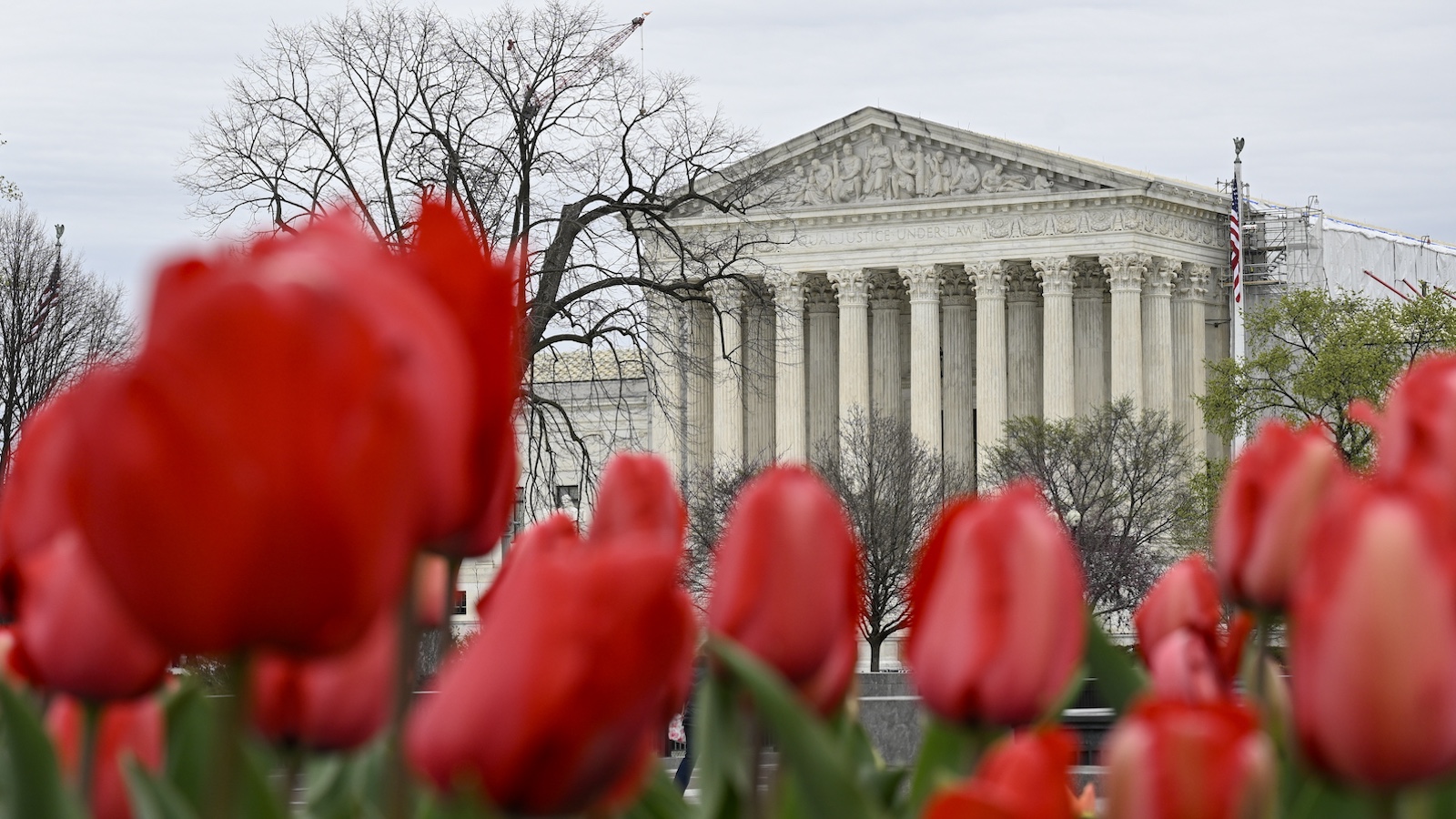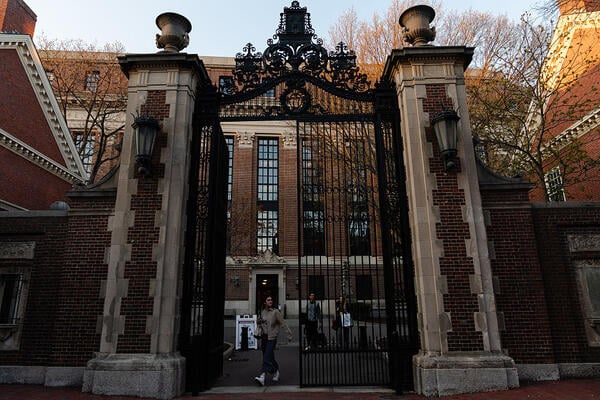Supreme Court Decision Could Significantly Impact Environmental Law

In a significant impending ruling, the U.S. Supreme Court is expected to weaken a fundamental law that mandates federal agencies to assess the environmental impacts of major projects. This upcoming decision comes in the context of the case Seven County Infrastructure Coalition v. Eagle County, Colorado, which centers around a proposed 88-mile railroad designed to connect an oil-rich region of Utah to existing tracks that lead to refineries located on the Gulf Coast.
The controversy exploded when environmental groups, along with a Colorado county, claimed that the federal Surface Transportation Board (STB) failed to adequately evaluate the potential climate, pollution, and other environmental impacts of the railroad project. This oversight is considered a violation of the National Environmental Policy Act (NEPA), a crucial piece of legislation established in 1970 that requires environmental reviews for significant federal actions. In 2023, a ruling from the District of Columbia Circuit Court of Appeals sided with the challengers, emphasizing that the STB had indeed neglected its responsibilities in terms of environmental assessment.
As the case now transitions to the Supreme Court, which is anticipated to issue a ruling in the next few months, observers speculate that the court is likely to favor the railway developers. Such a ruling could have far-reaching implications, potentially limiting the scope of environmental impacts that federal agencies must consider under NEPA, particularly in regards to climate-related effects. A decision of this nature could either support or restrict ongoing efforts by the Trump administration to dismantle decades-old NEPA regulations, which have been instrumental in environmental protection.
Wendy Park, a senior attorney at the nonprofit Center for Biological Diversity, expressed concern over the potential repercussions, noting, "All of these rollbacks and attacks on NEPA are going to harm communities, especially those that are dealing with the worst effects of climate change and industrial pollution." This sentiment underscores the significance of NEPA as a protective measure for vulnerable communities.
Under NEPA, federal agencies are required to conduct thorough environmental assessments of major projects, including infrastructure developments such as oil and gas pipelines, dams, mines, and highways. These assessments allow agencies to consider measures for mitigating adverse impacts and can lead to project rejection if the associated harms outweigh the proposed benefits.
Dan Farber, a law professor at the University of California Berkeley, pointed out that NEPA plays a vital role in ensuring that environmental concerns are integrated into the agendas of federal agencies, even those that might not traditionally focus on environmental issues. Moreover, NEPA serves as an essential tool for communities, enabling them to comprehend how proposed projects will impact their lives and providing them with a platform to contribute to the decision-making process.
The dispute traces back to 2021, when the STB approved the construction of a railroad that would link the Uinta Basin, an area rich in crude oil resources spanning approximately 12,000 square miles in northeastern Utah and northwestern Colorado, to the national railway network. Currently, this area is accessible only via trucks. The proposed railway would facilitate the transport of crude oil to refineries on the Gulf Coast, significantly increasing oil production from this region. The STB's environmental review indicated that under a scenario of high oil production, emissions from burning this crude oil could account for about 0.8 percent of U.S. emissions and 0.1 percent of global emissions, translating to approximately 53 million tons of carbon dioxide annually.
Challenging the STBs approval, environmental organizations and the Colorado county argued that the board failed to adequately consider vital impacts in its NEPA review, such as the ramifications of increased oil refining on communities already grappling with pollution along the Gulf Coast, as well as the heightened risk of oil spills and wildfires along the extensive rail network. In a ruling delivered in August 2023, the D.C. Circuit Court affirmed these claims, identifying numerous NEPA violations in the STB's environmental assessment.
In appealing to the Supreme Court, the developers of the railway initially posited that an agency should not need to evaluate environmental impacts stemming from a project under the jurisdiction of a different agency. For example, they argued that the STB should not have to consider air pollution effects from oil refining, which falls under the purview of the Environmental Protection Agency (EPA).
However, by the time of oral arguments in December, the proponents of the railway had shifted from this extreme interpretation, which contradicts established NEPA precedents. It is generally accepted practice for one agency's environmental assessment to include impacts that fall under the authority of other agencies, as noted by Deborah Sivas, a law professor at Stanford University. Instead, the railway developers proposed that agencies should only assess impacts that are directly relevant to their jurisdiction and that are "remote in time and space," potentially excluding effects on communities in the Gulf Coast which are thousands of miles away, as well as climate-related impacts associated with greenhouse gas emissions.
Park emphasized that ignoring these broader effects would fundamentally undermine NEPA's purpose, which is to inform the public about potential harms. "The entire purpose of this project is to ramp up oil production in Utah and to deliver that oil to Gulf Coast refineries," she stated. "To effectively allow the agency to turn a blind eye to that purpose and ignore all of the predictable environmental harms that would result from that ramped-up oil production and downstream refining is antithetical to NEPAs purpose."
As for the railway's developers, they have not publicly commented in response to inquiries from Grist regarding the case. However, Keith Heaton, director of the Seven County Infrastructure Coalition, previously highlighted the project's economic potential, stating, "We are optimistic about the Supreme Courts review and confident in the thorough environmental assessments conducted by the STB. This project is vital for the economic growth and connectivity of the Uinta Basin region, and we are committed to seeing it through."
Historically, the Supreme Court has tended to side with government positions in NEPA cases, prompting legal experts to predict that the court will, in some capacity, support the railway developers. Nonetheless, during oral arguments, several justices exhibited skepticism towards the arguments put forth by the railway supporters. Chief Justice John Roberts cautioned that imposing such strict limitations on NEPA review could expose agencies to legal liabilities.
Ultimately, the court may arrive at a middle ground in its decisionpossibly refraining from fully endorsing the D.C. Circuit's affirmation of a broad range of climate risks while also not allowing the railway developers to exclude multiple significant impacts as they had sought. This ruling will serve as a critical benchmark for federal agencies as the Trump administration introduces further uncertainty into the federal permitting process. In February, the administration released an interim rule aimed at rescinding longstanding regulations issued by the White House Council on Environmental Quality, which has overseen NEPA implementation across the federal government for nearly 50 years. Now, the responsibility for developing regulations falls to individual agencies, which must do so by next February.
Legal experts assert that how the Supreme Court rules will serve as a crucial guide for agencies as they create their own NEPA regulations. If the court decides that agencies are not required to consider climate impacts during NEPA assessments, it could enable Trump appointees to disregard greenhouse gas emissions. The White House has already directed agencies to exclude environmental justice considerations from their evaluations.
Conversely, a more nuanced ruling could undercut the Trump administrations efforts to narrowly define the scope of environmental reviews. If the justices affirm the necessity to consider certain impacts associated with the Utah railway project, for example, it could restrict how much the Trump administration can legally sidestep particular evaluations. Agencies will need to craft regulations that can withstand challenges in lower courts, which will inevitably refer to the Supreme Courts ruling when adjudicating NEPA disputes moving forward.
In the interim, experts caution that the Trump administration's move to have each agency formulate its own NEPA regulations will likely generate additional chaos and uncertainty, even as the administration claims to seek to expedite and simplify the permitting process through sweeping reforms. As Farber concluded, I think thats going to just slow down the process more and cause more confusion, and not really serve their own goals.
Correction: This article originally misstated how much carbon dioxide would result from burning fuels from the Uinta Basin under a high oil production scenario.



























